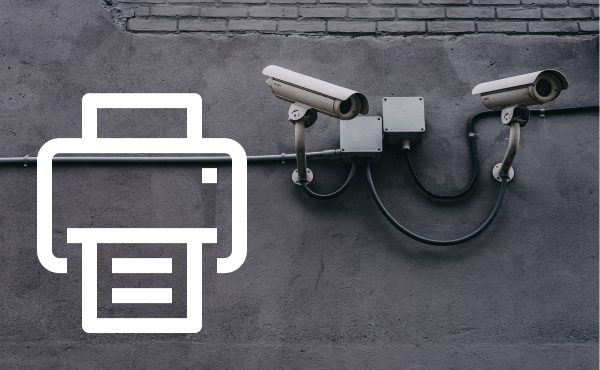
Sharp recently announced their partnership with Bitdefender, a leader in the cybersecurity industry, which will bring cybersecurity in MFPs to a whole new level. Printers and MFPs are often overlooked when it comes to cybersecurity despite their importance, and this partnership will ensure that those devices and your network are protected.
Cybersecurity and Multifunction Printers
When it comes to cybersecurity, many organizations are great at securing and monitoring common devices for malware and other cyber threats, however many also overlook the necessity of protecting their multifunction printers. MFPs, like computers and phones, are endpoints in a network and in a lot of cases are connected to the internet, and due to the nature of their use are prime targets for cybercriminals. MFPs store things such as user credentials, documents being sent to them, and can even access the cloud tools an organization utilizes for document storage and other uses. This enables hackers to access sensitive information, gain access into the network through a users’ credentials, and even spread malware to other devices on the network.
That being said, what are the odds a cyber criminal will target your organization’s MFP? In 2022, Cybernews conducted an experiment to see for themselves. Using the Internet of Things (IoT) which is essentially a network of smart devices that communicate with computers, they were able to find 800,000 printers worldwide. Cybernews then proceeded to take a sample size of 50,000 printers and attempt to hack them by utilizing a script they built to print a document from the device if successful. Please note that this was a form of “white hat” hacking, meaning that Cybernews had no malicious intent with this experiment, and the script only targeted the print function of the devices meaning that they had no access to personal or sensitive information. If successful, the device would print out a document on printer security. The result of the experiment was that Cybernews was able to hack into 27,894 of the 50,000 printers showing a success rate of 56%, which extrapolated onto the 800,000 they found initially means that roughly 450,000 printers worldwide were vulnerable to being hacked. With cyber criminals targeting organizations of any size, there is a high chance of being targeted. Read the full article here.
What is Bitdefender?
Bitdefender is an industry leading cybersecurity organization that provides top-class cybersecurity solutions worldwide. Bitdefender has gained the trust of governments, businesses, and consumers in over 170 countries and provides an award-winning solution. Bitdefender’s antimalware solution utilizes powerful technology such as AI, machine learning, and behavioral analysis to prevent, detect, and remove malware in real-time, and now is a partner with Sharp, bringing MFP security to a new level.
How Does Bitdefender Work with Sharp?
Bitdefender’s antimalware engine is installed in the firmware of Sharp MFPs. Once installed, the device performs regular scans, and Bitdefender performs a scan in real-time whenever data is sent or received from the device. Scans can also be conducted whenever by a user through the devices’ control panel. As another layer of security, scans are also performed every time an application or the firmware is updated. Bitdefender’s engine is automatically updated when new cyber threats emerge, meaning the MFP is always protected from the latest types of cyber-attacks.
To wrap up, printers and MFPs are often overlooked when it comes to network security, and many of them are vulnerable to cyber-attacks. Many organizations may not have the defense they need on these devices and could become susceptible to a data breach or other cyber threat due to overlooking them. Sharp partnered with Bitdefender, a leader in the cybersecurity industry, to provide a cybersecurity solution built into their MFPs that utilizes the latest technology to ensure your devices and network are secure. If you want to learn more, click the link below.
Sources: Cybernews | Sharp Blog | Sharp Blog